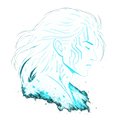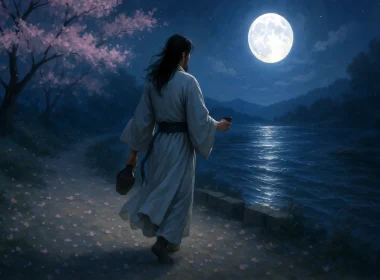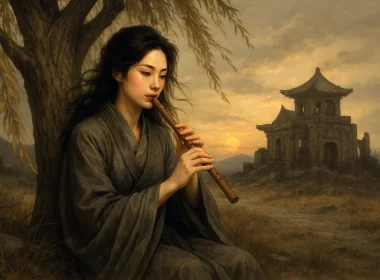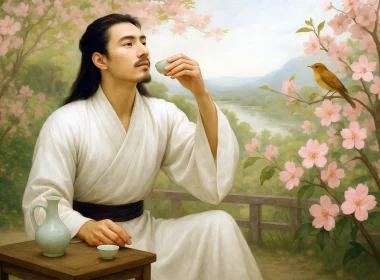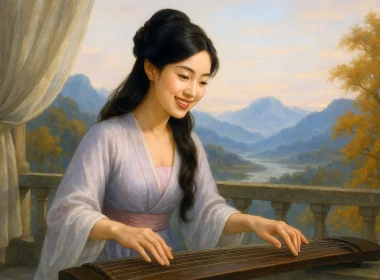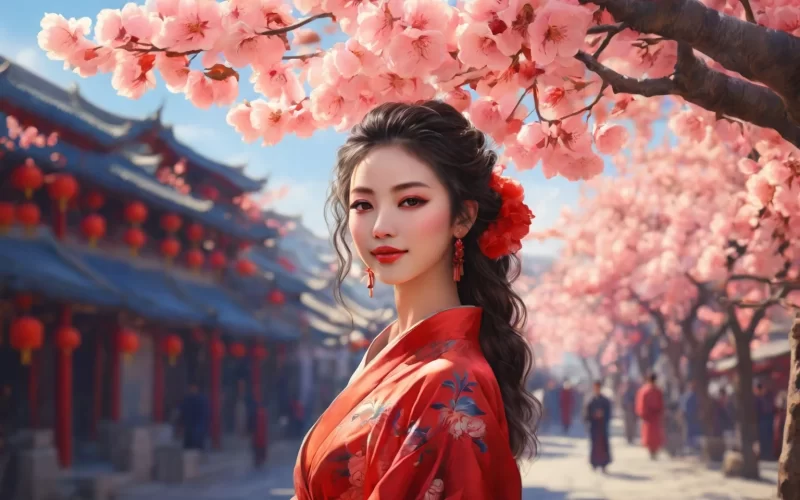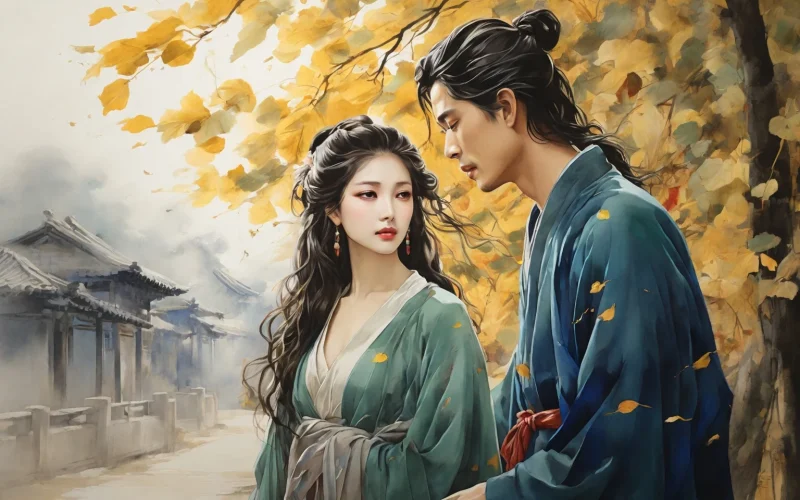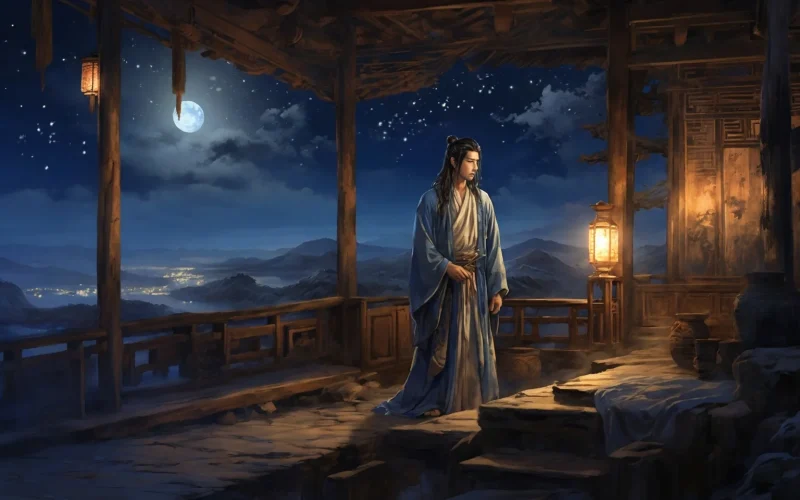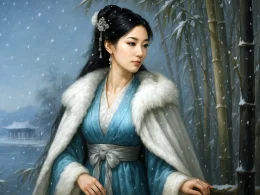In this house on this day last year a pink face vied
In beauty with the pink peach blossom side by side.
I do not know today where the pink face has gone;
In vernal breeze still smile pink peach blossoms full blown.
Original Poem
「题都城南庄」
崔护
去年今日此门中,人面桃花相映红。
人面不知何处去,桃花依旧笑春风。
Interpretation
This poem by Tang Dynasty poet Cui Hu is accompanied by a widely circulated backstory: having failed the imperial examinations, Cui Hu visited a southern village near the capital during springtime. There, he encountered a beautiful maiden when requesting water at a household, and they shared a moment of mutual admiration. Returning the following spring, he found the place abandoned with only peach blossoms remaining, inspiring him to inscribe this poem on the door. While the legend's authenticity remains unverified, it perfectly complements the poem's central theme of "the face gone, the blossoms still here"—a poignant meditation on transience and memory.
First Couplet: « 去年今日此门中,人面桃花相映红。 »
Qùnián jīnrì cǐ mén zhōng, rénmiàn táohuā xiāng yìng hóng.
This very day last year, within this very door, A face and peach blossoms mirrored each other's glow.
The opening establishes precise temporal and spatial coordinates—"this day," "this door"—creating a vivid snapshot of memory. The parallel images of "face" and "blossoms" reflect both the maiden's beauty and spring's radiant vitality, crystallizing a perfect moment suspended in time.
Second Couplet: « 人面不知何处去,桃花依旧笑春风。 »
Rénmiàn bùzhī héchù qù, táohuā yījiù xiào chūnfēng.
That face has vanished none know where, While peach blossoms still laugh in spring air.
Here, the present reality intrudes with heartbreaking contrast. The maiden's absence ("vanished none know where") clashes with nature's cyclical permanence ("still laugh"). The blossoms' anthropomorphized "laughter"—actually their wind-tossed dance—heightens the pathos, emphasizing life's continuance against human loss. The word "still" (依旧) tolls like a bell, marking what persists against what cannot be recovered.
Holistic Appreciation
This is a quintessential lyrical landscape poem that transcends into philosophical meditation on temporality. Through revisiting a springtime location, the poet contrasts cherished memories against present emptiness, using the dual imagery of "a face" and "blossoms" as vessels of memory and emotional symbolism. The opening line brims with nostalgic beauty while the concluding verse dissolves into the melancholy of changed circumstances, revealing temporal and emotional fissures.
The poem elevates "fleeting encounter" into "eternal remembrance," with the detail of "blossoms unchanged" becoming one of Chinese literature's most resonant symbolic images. It carries both personal loss and philosophical acceptance of life's transience. This universal, timeless emotional quality has sustained the poem's enduring popularity since the Tang dynasty.
Artistic Merits
- Harmonious scene-emotion fusion: The poet masterfully interweaves human presence with natural scenery, creating the vivid tableau of "a face among blossoms" where landscape becomes emotional medium. The peach blossoms symbolize not just springtime but the poet's cherished memory.
- Vivid contrasts, profound sentiment: The juxtaposition of "last year" versus "this year," the vanished face against enduring blossoms, constructs powerful temporal and emotional tension. Quiet verses resonate with deep sorrow, achieving remarkable emotional complexity through minimal expression.
- Concise yet suggestive language: Though only four lines, the poem contains multitudes - symmetrical structure, economical diction where every character carries weight. Phrases like "mutually glowing" and "laughing in spring breeze" animate the imagery while intensifying the emotional impact.
- Serene yet philosophical atmosphere: The "unchanged blossoms" represent nature's cyclical continuity, while "the face's whereabouts unknown" reveals life's impermanence. Through person-scene contrasts, the poet conveys poignant meditations on temporal flow.
Insights
With merely twenty-eight characters, this poem demonstrates profound integration of person and landscape, emotion and temporality. It teaches us that life's beautiful moments, however fleeting, can achieve permanence through depth of feeling. The work encourages cherishing present encounters while honoring past emotions, and inspires graceful acceptance of life's inevitable changes. When blossoms bloom again, though certain faces may never reappear, we can eternally preserve that heartbeat of memory.
Poem translator
Xu Yuanchong (许渊冲)
About the Poet
Cui Gu (崔护), 772 - 846 A.D., was a poet of the Tang Dynasty, a native of Dingzhou, Hebei Province. His poems are refined and elegant, and his language is extremely fresh.

